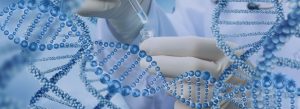Overview From footwear to tire to snowmobile impressions, snow impressions can provide extremely valuable evidence in helping to resolve criminal investigations. Unfortunately, photographing and obtaining a cast of a snow impression is often a challenge for the crime scene examiner.…
Category: Scene Investigation (page 11)
Bloodstain Documentation and Collection Methods
Overview At some point in their careers, every crime scene responder has encountered a scene where the blood present is “everywhere” and there is no clear way to begin. That feeling can be extremely overwhelming. This training will provide attendees…
Utility of 3D Scanning Technologies Workshop
Overview This 2-day workshop focused on introducing or enhancing forensic science practitioner’s knowledge and capabilities of 3D crime scene documentation technologies. Topics discussed include: Scope and utility of Leica ScanStation C10 and Faro Focus Strengths and limitations of each instrument…
Success Story: Identifying Ignitable Liquids in Fire Debris and Providing Error Rates for Purposes of Testifying
National Institute of Justice and University of Central Florida Date November 2016 Overview Determining the presence of ignitable liquid residue among the fire debris in an arson investigation is a complicated forensic problem. Most ignitable liquids commonly encountered consist of…
Success Story: Improving Detection of Crime Scenes
National Institute of Justice and University of South Carolina Date August 2016 Overview The detection, collection, and analysis of blood evidence recovered from a crime scene is critical in a forensic investigation because of the potential DNA it carries. However,…
Success Story: Introducing New Methods for DNA Analysis
National Institute of Justice and Midwest Research Institute Date April 2015 Overview Dr. Micah Halpern, formerly of Midwest Research Institute, used National Institute of Justice (NIJ) research grants to develop a unique genotyping method that is capable of rapidly producing…
Success Story: Advancing Rapid DNA Analysis
National Institute of Justice and NetBio Date April 2015 Overview Using research grants provided by the National Institute of Justice (NIJ), NetBio of Waltham, MA, developed a Rapid DNA Analysis (RDA) system that is much faster at developing DNA profiles…
Success Story: Understanding the Ecology of Human Decomposition Methods for Estimating Postmortem Interval
National Institute of Justice and the National Museum of Health and Medicine Date April 2015 Overview Data on the microbiome of decomposing and skeletonized remains are providing an avenue for understanding how microbial communities may be used to augment medicolegal…
Success Story: Bringing Short Tandem Repeat DNA Identification to Law Enforcement
National Institute of Justice, UC Berkeley, and IntegenX Date April 2015 Overview Dr. Richard Mathies, chemist and professor at UC, Berkeley, was awarded NIJ funding to develop faster, more reliable, higher throughput, more sensitive, and more integrated technologies for forensic…







